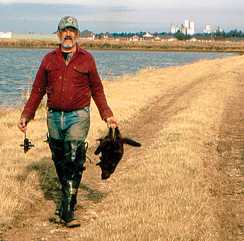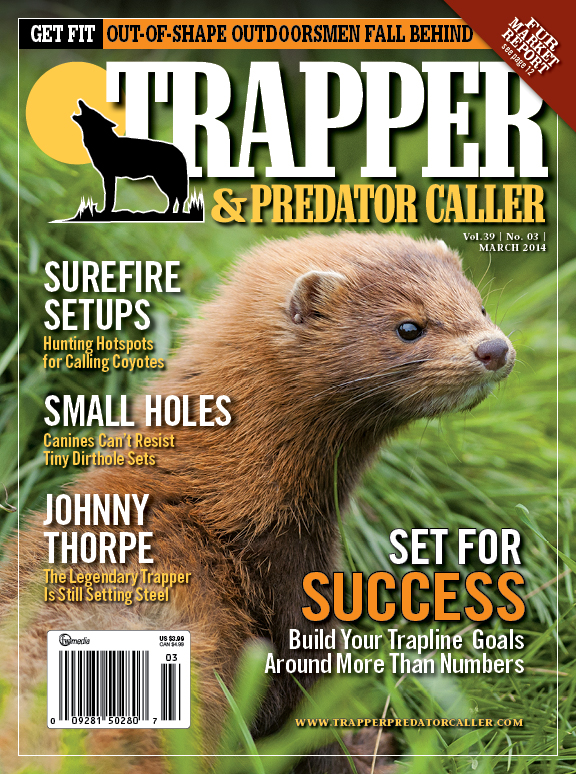
This is an excerpt from Jim Spencer’s article “Trapline Expectations,” which appeared in the March 2014 Trapper & Predator Caller issue.
By Jim Spencer
No matter how much expertise you develop as a trapper, you can’t catch more critters than the habitat of your trapline can produce. Knowledge, expertise and elegant technique will never make up for a shortage of targets. Drop the best beaver trapper in the world in the middle of the Mojave Desert, and he won’t need many beaver stretchers.
Competition from other trappers can also limit your catch. If there were 100 raccoons on a stretch of river and other trappers take half of them, your catch won’t be as high as it would have been if you had the river all to yourself.
If your area had a high raccoon population last year but distemper got into them over the spring and summer, you’re not going to have as many raccoons to work with this year. If you had a severe spring and summer drought, and creeks and ponds went dry or very low, expect your local muskrat population to be down accordingly. Things like that influence your catch, and there’s nothing much you can do about it.
Of course, there’s not much a trapper can do about furbearer population densities or competition from other trappers. You can shift from one species to another in response to population swings and fur prices, but if target furbearers are scarce in your part of the world, you won’t catch as many as the guy who’s trapping where those species are abundant. If you have competition from other trappers (and who doesn’t?), there’s not much you can do but accept that you’ll be splitting the potential of your line with those other trappers.
Weather, too, enters into any projection of a trapline’s potential. Bad weather and inclement conditions must be figured into the equation when you’re trying to figure out how much fur you can take from a given area. How many days of bad weather do you think you’ll have? Nobody knows the exact answer to that one, of course, but you can guess at it, based on normal fall and winter weather patterns.
Jim Spencer’s full article appeared in the March 2014 issue of Trapper & Predator Caller.
You can pick up a copy of the digital issue on www.ShopDeerHunting.com. Or if you’d like to subscribe to Trapper & Predator Caller, please visit the subscription page on our website.

